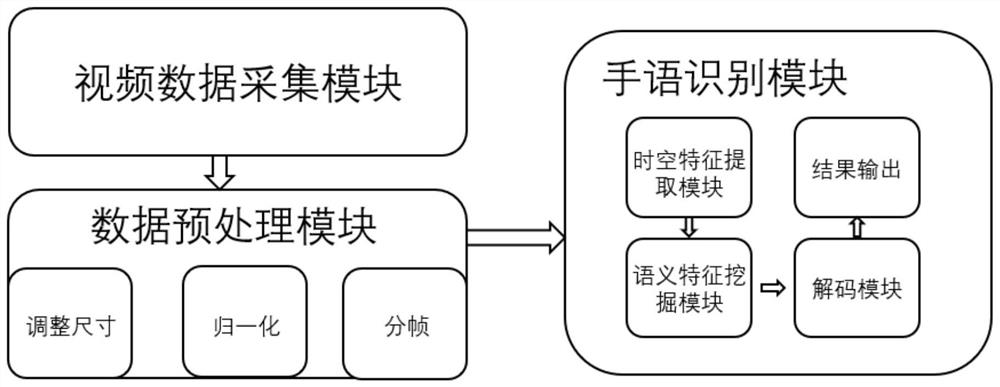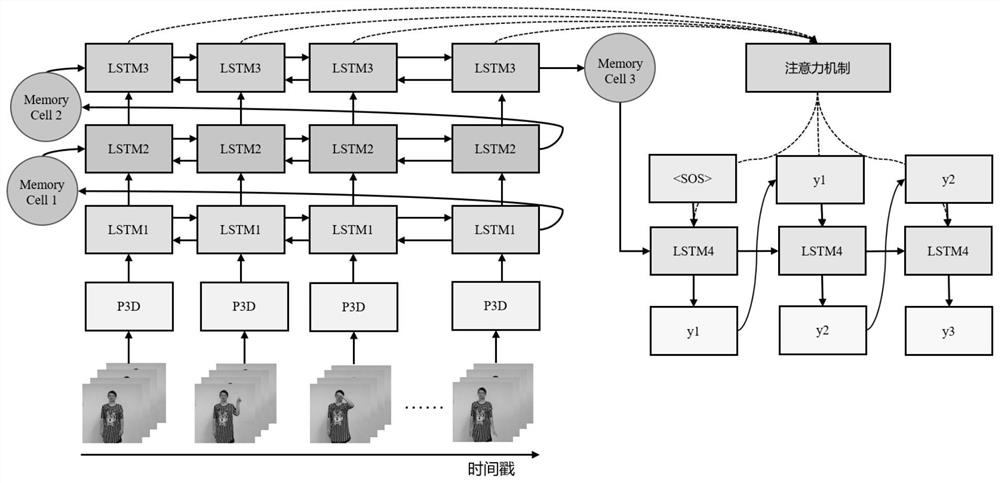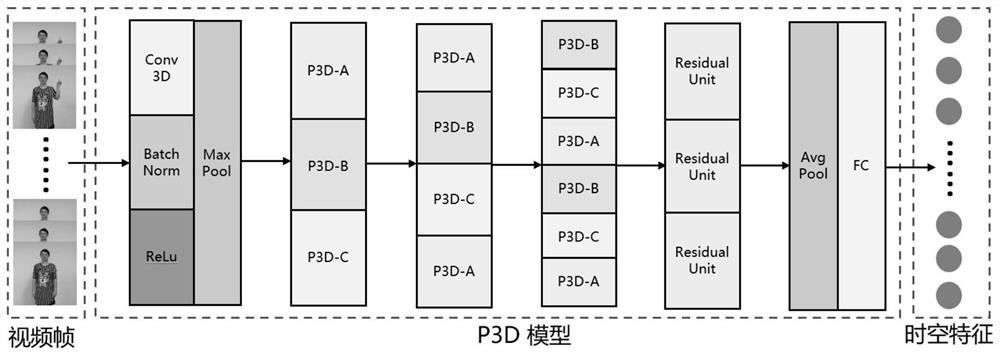Sign language recognition system and method based on space-time semantic features
A technology of spatio-temporal semantics and recognition systems, applied in the field of sign language recognition, can solve problems such as communication barriers between deaf and dumb people and the general public
- Summary
- Abstract
- Description
- Claims
- Application Information
AI Technical Summary
Problems solved by technology
Method used
Image
Examples
Embodiment Construction
[0072] In order to facilitate the understanding of those skilled in the art, the present invention will be further described below in conjunction with the embodiments and accompanying drawings, and the contents mentioned in the embodiments are not intended to limit the present invention.
[0073] refer to figure 1 As shown, a sign language recognition system based on spatiotemporal semantic features of the present invention includes: a video data acquisition module, a video data preprocessing module and a sign language recognition module; wherein,
[0074] The video data acquisition module collects sign language video data through common surveillance cameras, external cameras, smart devices (such as smart phones, smart glasses, etc.) built-in cameras or other camera modules;
[0075] The video preprocessing module includes: a video frame resizing module, a data normalization module and a video framing module;
[0076] The video frame resizing module scales the size of the acq...
PUM
 Login to View More
Login to View More Abstract
Description
Claims
Application Information
 Login to View More
Login to View More - R&D
- Intellectual Property
- Life Sciences
- Materials
- Tech Scout
- Unparalleled Data Quality
- Higher Quality Content
- 60% Fewer Hallucinations
Browse by: Latest US Patents, China's latest patents, Technical Efficacy Thesaurus, Application Domain, Technology Topic, Popular Technical Reports.
© 2025 PatSnap. All rights reserved.Legal|Privacy policy|Modern Slavery Act Transparency Statement|Sitemap|About US| Contact US: help@patsnap.com



